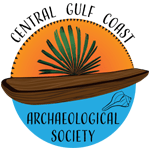 Shell Mounds, Coastal Evolution, and Indigenous Engineering of Tampa Bay’s Inshore Bayous
Shell Mounds, Coastal Evolution, and Indigenous Engineering of Tampa Bay’s Inshore Bayous
Kendal Jackson
In this talk, Kendal Jackson discusses key findings from recent geological and archaeological investigations at several of Tampa Bay’s inshore bayous, including Double Branch Bay, Papy’s Bayou, Cockroach Bay, and Bishop Harbor. Drawing on data from 65 estuarine sediment cores and 38 excavations at Native shell-mound sites—including more than 100 new radiocarbon dates— Jackson outlines a new history of environmental transformation extending back ca. 30,000 years, including detailed sequences of estuary formation and transformation from ca. 6,500 years ago to the present. The new work reveals that millennia of shell-mound construction by ancestral Indigenous peoples substantially influenced the trajectory of inshore estuary development and continues to structure the character and distribution of tidal wetland habitats.
Kendal Jackson is a PhD candidate at the University of South Florida in Tampa. He works in both academic and applied settings, studying historical and ancient environments and how they have been altered and managed by past human societies. He received undergraduate and master’s degrees from USF and has worked at numerous archaeological sites throughout Florida.
This monthly CGCAS Archaeology Lecture series is sponsored by the Alliance for Weedon Island Archaeological Research and Education (AWIARE).


